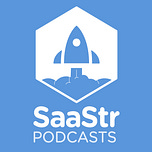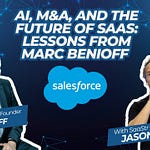Jason Lemkin is the Founder and VC @ SaaStr, or more accurately put Jason is a 2x founder, 1x VC, and constant SaaS enthusiast. He led or sourced the first VC investments in many leading enterprise/SaaS start-ups, Greenhouse.io, Pipedrive, Algolia, Talkdesk, RainforestQA, Automile, and more. He is also an advisor or smaller investor in Showpad, FrontApp, Influitive, BetterWorks, and other SaaS leaders. Jason has co-founded two successful start-ups selling to the enterprise. Before SaaStr and VC investing, he was CEO and co-founder of EchoSign, the web’s most popular electronic signature service, from inception through its acquisition by Adobe Systems Inc. He then served as Vice President, Web Services at Adobe, where he oversaw the growth of EchoSign and Adobe Document Services to $50,000,000 in ARR in 2012 and $100,000,000+ ARR in 2013. Prior to EchoSign and Adobe, he co-founded one of the only successes in nanotechnology, NanoGram Devices, which was acquired for $50m just 13 months after founding. Other than SaaS he is like me, no known hobbies.
In Today’s Episode You Will Learn:
How did Jason make his way into the world of SaaS and come to be Founder and VC @ SaaStr?
ACV: What levels of ACV and characteristics suggest potential for a unicorn? How does Jason look to help founders attain higher ACVs? Why is stay focused horrible advice with regards to increasing your ACV with differing customer demands?
Does Jason believe that founders always undersell? What advice would Jason give to founders that are nervous to ask for more? What customer response would excite Jason and what would make him concerned?
Jason has previously said that ‘founders have to be 110% committed to sales’. What does this mean? How does this look when assessing a founder? Should founders be happy to pay their sales hires more than them? How quickly should the payback period be on these reps?
Jason has also previously said that some founders financials are ‘simply ridiculous’. What makes him say this? What financials are fundamental to have very accurately pin pointed? Why is 100% gross margin impossible?
60 Second SaaStr
Why does Jason like it when startups have clients that are not in tech?
What does Jason know now that he wishes he had known at the beginning?
What should SaaS founders look for in their investors?
Why does Jason only invest out of the SaaStr community?
If you would like to find out more about the show and the guests presented, you can follow us on Twitter here:













Share this post